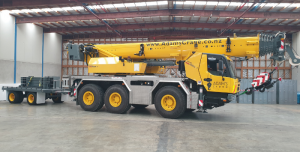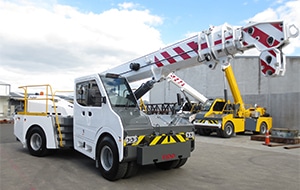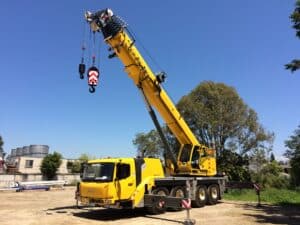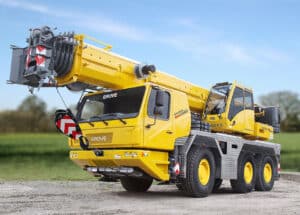The Difference Between Rough-Terrain Cranes and All-Terrain Cranes
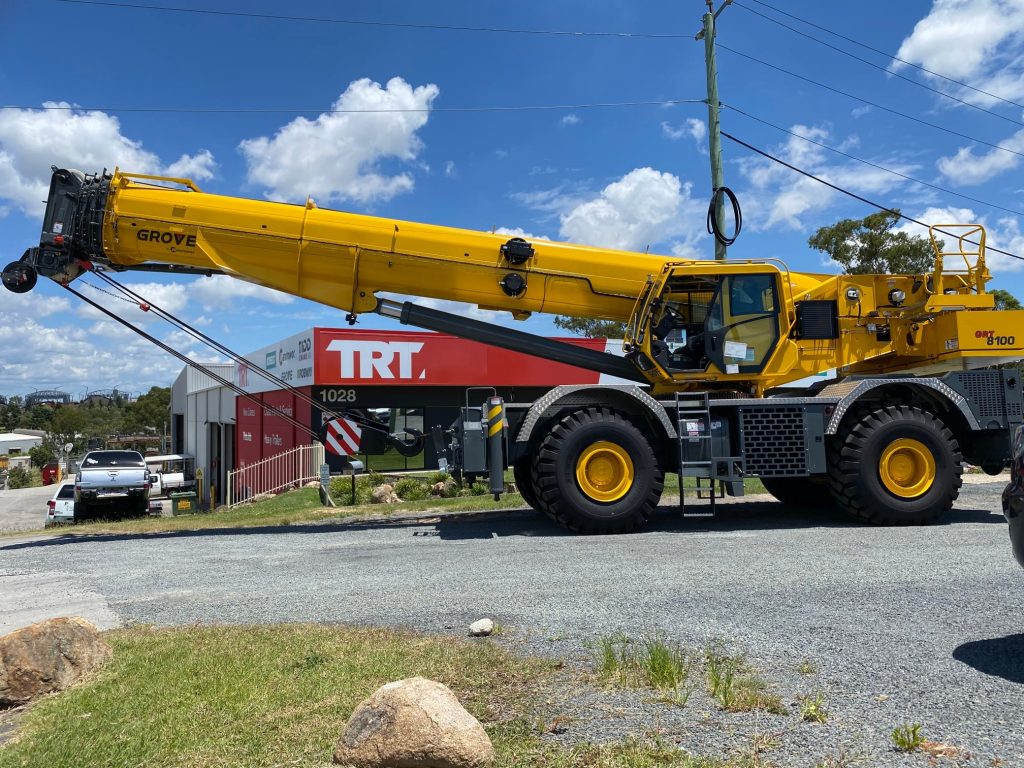
Introduction
In the world of large-scale construction projects, many different types of cranes can be used to move heavy loads. Two of the most common types are rough-terrain cranes and all-terrain cranes.
While both types of cranes are designed for off-road use, some key differences set them apart. Here is a closer look at the rough-terrain vs all-terrain crane debate.
What Is A Rough Terrain Crane
Rough terrain cranes are designed for off-road use and are capable of travelling over rough, uneven terrain. They are typically used in construction and mining operations, as well as for agricultural and forestry applications.
Rough terrain cranes are available in a variety of sizes and configurations to suit the specific needs of the application.
These cranes are typically used in applications where traditional cranes would not be able to operate due to the terrain. Rough terrain cranes are capable of travelling over rough, uneven, and soft surfaces, as well as obstacles such as ditches and logs to some degree.
Rough terrain cranes are available in a variety of sizes and configurations to suit the specific needs of the application.
Typically they have four-wheel drive and four-wheel steering for maximum manoeuvrability. They also have a boom that can be raised or lowered to reach the desired height.
Rough terrain cranes are available with a variety of boom lengths and lifting capacities to suit the specific needs of the application.
A rough terrain crane is typically powered by a diesel engine. However, some models are available with alternative power sources such as electric motors or gasoline engines.
Rough terrain cranes are available in a variety of sizes and configurations to suit the specific needs of the application.
Pros And Cons Of Rough Terrain Cranes
A rough terrain crane is a type of crane that is specifically designed for use on rough terrain. Rough terrain cranes are typically used in construction and mining applications, as well as in other industries where heavy lifting is required.
There are several advantages and disadvantages to using rough terrain cranes, which should be considered before making a purchase.
Advantages:
- Rough terrain cranes are designed to be highly manoeuvrable, even in tight spaces. This makes them ideal for use in construction sites where space is often limited.
- Rough terrain cranes have four-wheel drive capability, which allows them to navigate over rough and uneven terrain with ease.
- Rough terrain cranes are equipped with special tires that provide increased traction on loose or soft surfaces.
- Rough terrain cranes are designed with a wider centre of gravity and lightweight body to enhance off-road mobility
Disadvantages:
- Rough terrain cranes require outriggers for stabilisation due to the design to stop them from toppling over.
- Rough terrain cranes are not suitable for use on all types of terrain. In particular, they should not be used on very soft or unstable surfaces, as this could cause the crane to tip over.
- Rough terrain cranes require more maintenance than standard cranes, due to their exposure to more extreme conditions.
- Rough terrain cranes cannot be driven on public highways and most other public roads
What Is An All-Terrain Crane
An all-terrain crane is a multi-axle crane that is specially designed for off-road conditions. It is typically used for construction and heavy lifting applications. All-terrain cranes are available in various sizes and configurations to suit different needs.
All-terrain cranes typically have four or more axles. The front and rear axles are usually driven, while the middle axles are typically idler or tag axles. All-terrain cranes also have a boom that can be raised and lowered, as well as extendable outriggers that stabilize the crane during lifting operations.
All-terrain cranes are designed for use in rough terrains, such as construction sites, forests, and mines. They are also commonly used in disaster relief operations, such as lifting heavy debris or rescuing people from collapsed buildings.
All-terrain cranes are typically operated by a certified crane operator. They are also equipped with a variety of safety features, such as outrigger pads and boom angle indicators, to help prevent accidents.
A major difference between an all-terrain crane and a rough terrain crane is that an all-terrain crane is capable of being road legal and driven on tarmac roads, whereas a rough terrain crane generally needs to be transported on a low loader trailer.
Pros And Cons Of All-Terrain Cranes
An all-terrain crane is a type of crane that is designed to be used on all types of terrain, including rough and uneven surfaces. All-terrain cranes are typically used for construction and heavy lifting applications.
There are many benefits to using an all-terrain crane, but there are also some potential drawbacks to consider.
Advantages:
- All-terrain cranes are very versatile and can be used in a variety of applications.
- All-terrain cranes are designed to be used on all types of terrain, including public roads which makes them easier to transport.
- All-terrain cranes typically have a longer reach than other types of cranes, which can be beneficial for certain jobs.
- All-terrain cranes typically have a higher lifting capacity than rough terrain cranes, which can be beneficial for certain jobs.
- Some models of all-terrain cranes can be operated in a variety of ways, including by remote control, which can be safer for operators.
Disadvantages:
- All-terrain cranes can be more expensive than other types of cranes.
- All-terrain cranes can be more difficult to operate than other types of cranes, requiring special training to operate one.
- All-terrain cranes are often heavier and larger than rough terrain cranes making them harder to manoeuvre in tighter spaces.
- Most models of all-terrain cranes require outriggers for stabilisation.
How To Choose Which Crane Is Right For Your Situation
There are many different types of cranes and each has its advantages and disadvantages. The type of crane you choose will depend on the task and the specific situation.
The first thing to consider is the type of load you need to lift. Different cranes are designed for different weights and sizes of loads. If you need to lift a very heavy load, you will need a crane that is designed for that specific weight.
Another important factor to consider is the height of the load. Some cranes are better suited for lifting very tall loads, while others are better for lifting shorter loads. You will need to take into account the height of the load when choosing a crane.
You also need to consider the space you have available for the crane. Some cranes are very large and require a lot of space, while others are smaller and can be used in tighter spaces. You will need to make sure you have enough room for the crane you choose.
You also need to think about the type of terrain you will be using the crane on. Some cranes work better on smooth surfaces, while others can handle rough terrain. You will need to take this into account when choosing a crane.
Once you have considered all of these factors, you should know which crane is right for your needs. If you are still unsure, you can always ask for help from a professional. They will be able to help you choose the right crane for your specific situation.
Learn more about Crawler-Cranes here.

